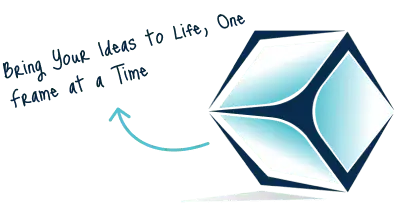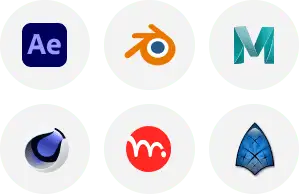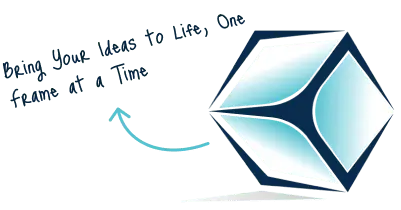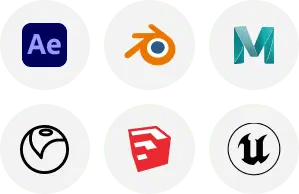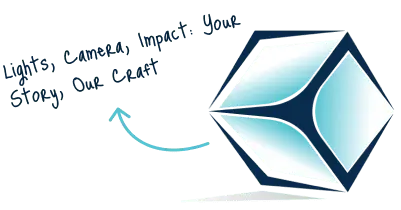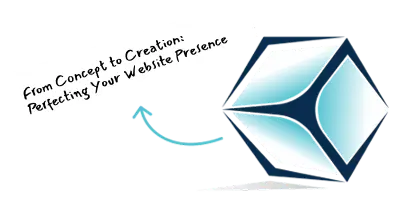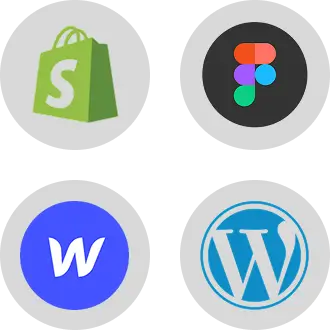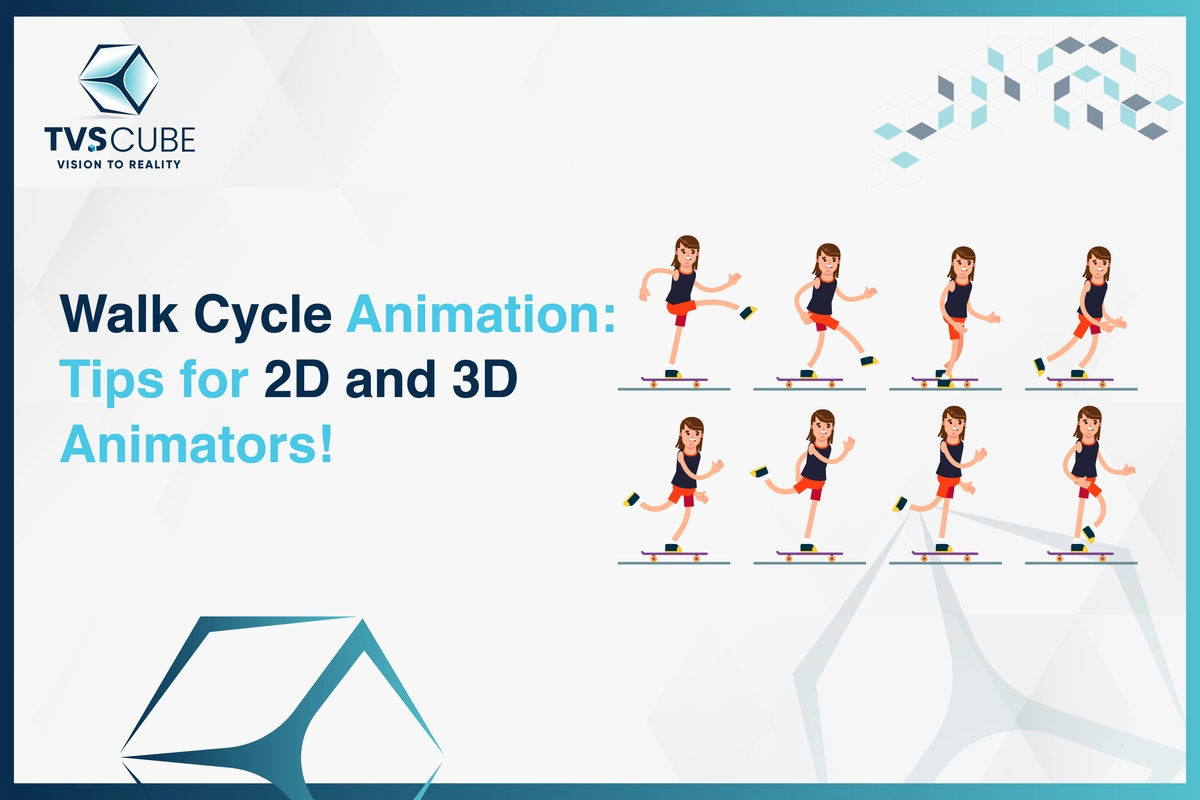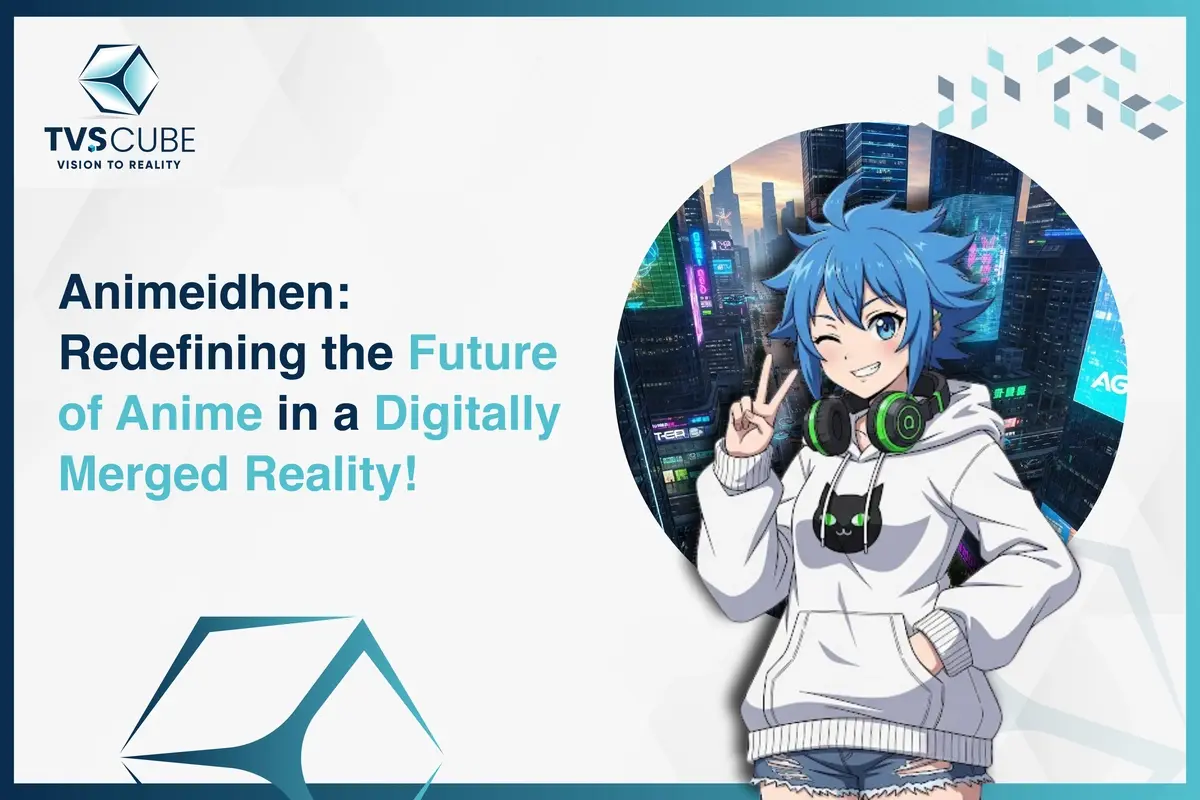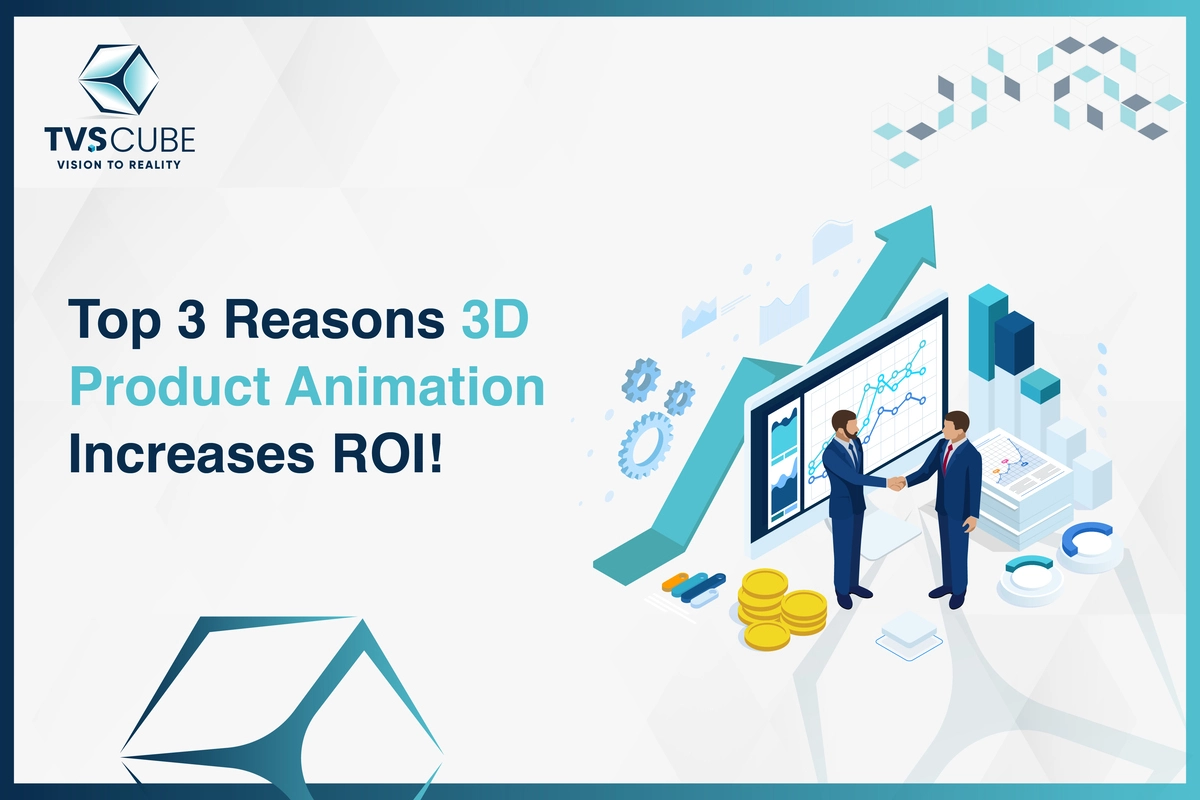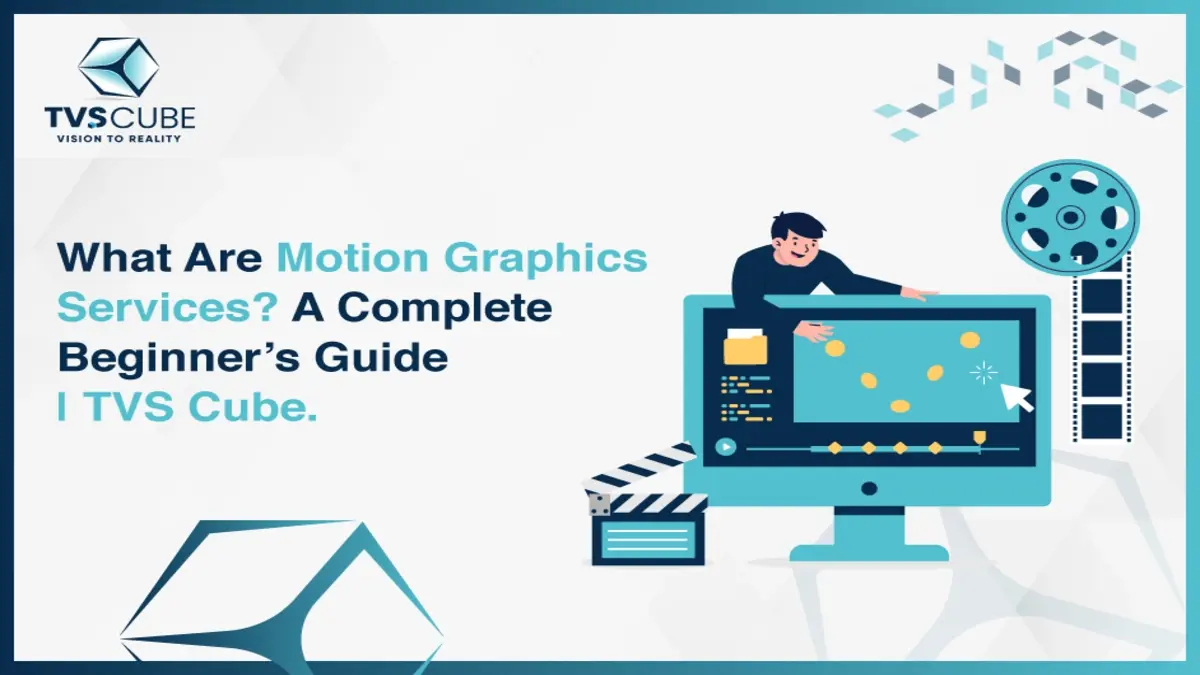This contemporary world is actually swimming in 3D animation. From movies to video games, advertisements to social media posts, rendering into three dimensions has become an essential component of making those experiences more exciting for people all over the world. Ever thought to yourself what goes into creating such lifelike images in 3D, like Avatar’s flying creatures and Toy Story’s famous visuals?
Making 3D Animations can be an enchanting process that blends art with technology, requiring various skills, tools, and techniques that bring ideas to life on screen. If you are new to creating animations or simply curious about their workings, this blog will walk you step-by-step from start to finish! If you’re considering getting professional help, searching for “video production near me” can help you find local experts who can guide you through the process. Prepare yourself for an incredible adventure into 3D animation!
What is 3D Animation?
Before delving further into how 3D animation works, let’s first define its terms and meaning. 3D animation involves creating three-dimensional digital environments for moving images to appear – unlike two-dimensional cartooning which relies on flat surfaces for presentation – creating moving pictures with three dimensions which move and interact more realistically than 2D cartooning does.
➔ Did you know, how do 3D visuals work?
3D visuals create realistic representations of objects in space, using software to render models into 2D images. They enhance interaction and are widely used in games, movies, and product design.
3D animation involves digital artists creating digital models of characters, environments, and objects in 3D space that can be freely moved around to simulate lifelike movements in real space. You become both the director and creator of every scene! If you’re looking for professional expertise, TVS Cube – 3D animation company can help bring your vision to life with cutting-edge techniques and creativity.

The Essential Steps of 3D Animation
It is indeed a task involving many steps, technical plus artistic skills. Let’s break down these stages to give you a more thorough understanding on how 3D Most certainly makes.
Step 1: Concept and Storyboarding
As with any artistic pursuit, animated short films start as ideas – whether short animations or parts of feature films – so to begin your animation endeavor, a concept should be the starting point. A concept allows you to plan out basic story elements as well as determine your animation type (ranging from walk cycles up to full-blown action sequences involving complex characters and environments).
Once your concept is clear, storyboarding comes next. Think of storyboarding like a comic-strip version of your animation: here, you sketch out key scenes and events while choosing their composition, camera angles, and overall visual direction – which all help establish its timing, pace, and flow. For more polished and professional results, you might consider using 3D product visualization services to create detailed visual references for your scenes, enhancing the overall visual direction of your project.
Step 2: Modeling
Once concept and storyboarding is completed, the next stage in 3D animation is modeling. Modeling involves creating digital 3D models which will eventually be animated – similar to sculpture except software such as Blender Maya 3ds Max is used instead of physical materials like clay for this process.
There are two types of 3D models:
- Organic models: Organic models represent living things such as humans, animals or trees and creating them requires more complex techniques in order to get accurate shapes and proportions.
- Hard-surface models: Non-living objects such as vehicles, buildings and furniture all fall under this category of models requiring precision in geometry design and assembly.
At this step, you will begin working with polygons – the building blocks of 3D models. As more polygons are added to your model, its look becomes smoother and more detailed; however, more computing power may also be required. For those looking to create professional 3D models and animations, TVS Cube – animated marketing video production offers expertise in crafting high-quality visuals that can enhance your brand’s message.
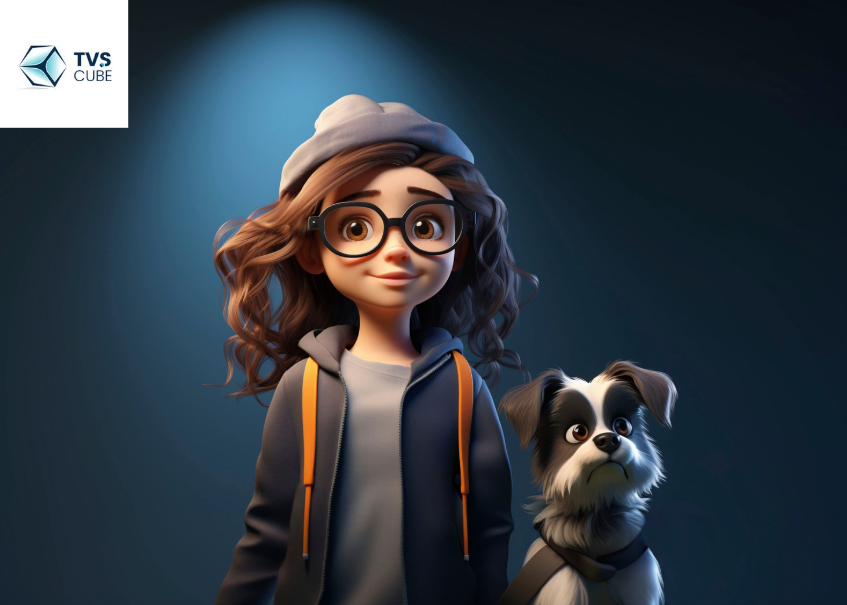
Step 3: Texturing
Once your 3D model is finished, it’s time to add textures. Texturing involves applying 2D images (textures) directly onto 3D models in order to add colors, surface details and realism – such as skin, metal, fabric or wood textures that provide visual depth or simulate various materials like skin.
UV mapping can bring any model to life; for instance, adding textures like brick, wood, and skin add a whole new depth and dimension. UV mapping uses two-dimensional representation of three-dimensional surfaces so textures can be accurately applied. This process is closely tied to the level of detail modeling, where the amount of detail applied to a model varies depending on its proximity to the camera or importance in the scene.
Step 4: Rigging
Now that your 3D models look incredible, it is important to give them movement. Rigging involves creating a skeleton for them composed of joints and bones similar to real human skeletal systems that allows the model to move naturally.
For example, to make a character walk properly you must rig its limbs so they bend and rotate properly – this prepares it for animation. Rigging also involves adding control systems which enable animators to manipulate its movements easily.
Step 5: Animation
Animation is where all the magic begins! Here, your rigged characters and objects come to life by being animated over time.
There are several animation techniques used in 3D visualizations, including:
- Keyframe Animation: Keyframe animation is the most prevalent form of animation; here, important poses or positions (keyframes) of the model at specific moments (at known points in time), then interpolate frames between these keyframes (known as tweens) for smooth movement.
- Motion Capture: For realistic movements, motion capture involves recording real-world actors using sensors, then applying those movements to 3D models.
- Procedural Animation: Procedural animation uses algorithms or physics simulations to automatically generate movement; typically used for water, smoke and crowd simulations.
Animation is more than simply making things move – it is about conveying emotion, telling a tale, and animating static objects with life. Timing, spacing, and weight of movements play an integral role in producing convincing animations. This is especially true in video game animation, where character movements and interactions are crucial for creating immersive and believable gameplay experiences.

Step 6: Lighting
Lighting is often underestimated when it comes to 3D animation. Much like in real-life settings, appropriate lighting can make or break a scene; setting the mood, emphasizing key features and providing depth into three-dimensional models are just some of its many functions.
3D animation lighting can range from being as basic as one light source to multiple light sources that replicate natural or artificial illumination sources. There are various kinds of lights used within 3D software:
- Point Lights: These emit light in all directions from a single point.
- Spotlights: These focus light in a specific direction.
- Area Lights: These emit light from a large area, creating soft shadows.
Step 7: Rendering
Once everything has been configured, rendering is the next step. Rendering refers to the process of producing two dimensional images from your three dimensional scene by using a rendering engine containing all its elements such as models, textures, lighting effects and camera setups – producing one large composited image as output.
There are two main types of rendering:
- Real-time rendering: Real-time rendering is very widely employed in video games and interactive media; it generates images in real-time as a player progresses through a scene.
- Offline rendering: Offline rendering is used frequently in films and animations, whereby each frame is rendered and animated together in the compiled format. This takes quite an amount of time if the scene has high complexity.
Rendering can be computationally intensive and producing high-quality renders can take hours or days for just several seconds of animation.

Step 8: Compositing and Post-Production
Once rendering is complete, the next stage in animation production is the compositing phase. Here you combine rendered frames together and make final adjustments as required – adding visual effects, color grading or any additional finishing touches necessary so your animation looks its absolute best.
Post-production includes sound design, which involves the incorporation of music, voiceover, and other sound effects into animation to heighten user engagement and provide the best overall experience possible. This is particularly important in animated marketing videos, where sound plays a key role in capturing attention and conveying the brand message effectively.
Essential Software Tools for 3D Animation
Creating 3D animations requires the proper tools. There are many software programs available, but here are a few of the most popular options:
● Blender:
Blender is a very much touted and very versatile free 3D animation software suitable for total Blender Modeling and rigging, animating, even rendering, making blender animation perfect for beginners and professionals alike.
● Autodesk Maya:
The most popular and worldwide recognized software for 3D animation is Maya, which is well-known as an industry standard in all areas of 3D animation software and Maya modeling regarding character rigging and animation in particular.
● Cinema 4D:
This widely used software application is extremely simple in interface and equipped for all tasks related to motion graphics and visual effects production.
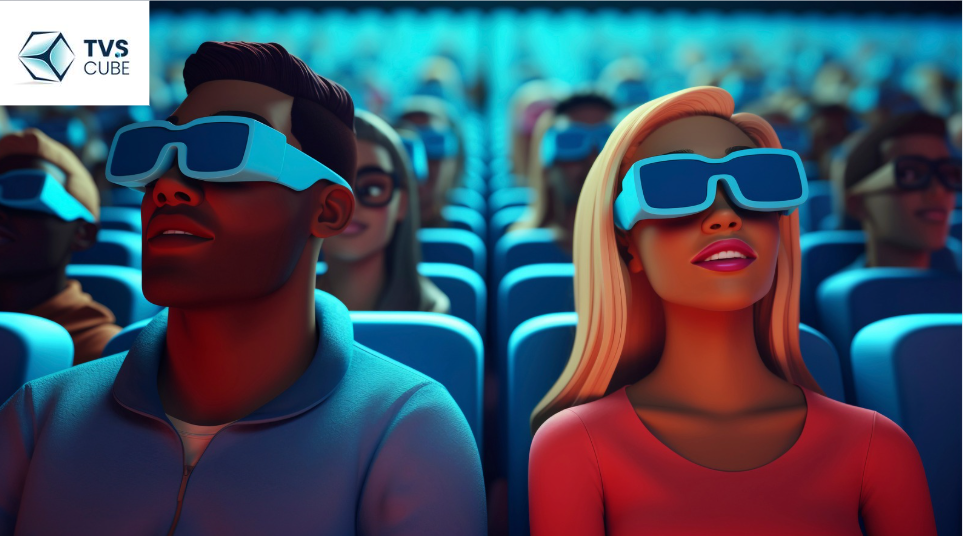
● 3ds Max:
This software is extensively used for 3ds Max Modeling, animating, and rendering in the game development and architectural visualization applications, as well as to automate workflows and speed them up in the design workflow.
● ZBrush:
Very much like many other digital sculpting programs, Zbrush is an extremely powerful digital sculpting tool that helps to design incredibly life-like 3D models – this is utilized in most cases to prepare character designs.
➔ Additionally, you must know, What is Leia Pix?
Leia Pix is an AI tool designed for creating and editing 3D images and animations, taking advantage of AI technology to produce interactive 3D content and enhance visual storytelling. LeiaPix allows creators to rapidly produce lifelike, engaging 3D experiences more efficiently while needing less technical know-how than ever before.

What are the three types of visualization?
Before we explore the types, Let’s get a brief and clear idea of What is a visualization method? Visualization methods represent data visually, simplifying complex information through charts, graphs, or images. They enhance understanding across fields, improving decision-making and communication.
| Type of Visualization | Purpose | Description | Examples |
| Descriptive | Represent historical data | Focuses on showing patterns, trends, and relationships within past data. Often presented through graphs or charts. | Time series charts, bar graphs, pie charts |
| Diagnostic | Identify causes and correlations | Helps in exploring relationships and understanding the causes of trends or patterns in the data. | Scatter plots, correlation matrices |
| Predictive | Forecast future trends or behaviors | Uses statistical models and simulations to predict what might happen in the future. | Regression models, simulations, trend lines |
What Are 3D Animals and How Are They Created in Animation?
3D animals have become an indispensable component of animation, giving virtual creatures life through realistic yet fantastical imagery. But what exactly are 3D animals, and how are they created?
3D animal animation involves modeling, rigging, texturing and animating animals within a three-dimensional environment using software such as Maya, Blender or ZBrush. Animators build these animals while paying close attention to details like their skeletal structure, fur textures and behaviors – for instance creating a 3D lion requires creating its digital body in Maya with movements mimicking real world actions as well as adding realistic details such as fur or sharp claws for added realism before applying textures that give its appearance realistic looks such as intricate fur details or claw sharpnesses before animating it so it appears natural such as walking, running or attacking in real life based upon biomechanics knowledge.
TVS Cube – 3D Character Animation Services offer endless creative potential; their applications range from replicating real world species to designing unique characters found only in animated movies and games.
Can 3D Printed Animals Enhance the World of Animation?
With 3D printed animals on the rise, animators are finally able to bring digital and physical worlds closer together. But how exactly can 3D printed animals help enhance animation, and what impact will this have for creators?
3D printed animals refers to physical objects created using 3D printing technology from digital designs. For instance, after animating a 3-dimensional model of a wolf in a film, an animator may opt to 3D print an exact miniature replica for promotional material or collector’s item series purposes. Furthermore, printed models could even be utilized as educational tools or stop motion animation where each frame of animation manipulates each pose physically frame by frame.
3D printed animals distinguish themselves by taking digital creations into the physical realm, adding depth and dimension to animation processes. Artists can utilize 3D printing technology to craft miniature animal figurines viewers can hold in their hands as part of an immersive, collectible experience – turning animation into something interactive yet collectible!
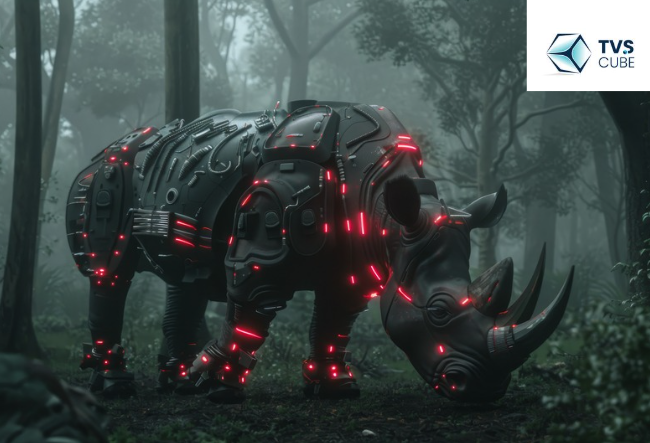
What Makes a 3D Animated Film So Different?
How is 3D animation different from traditional animation and why is it captivating? 3D animated films’ charm lies in their vivid, detailed worlds that they create compared to 2D cartooning which relies on characters being drawn and painted frame by frame; by comparison 3D involves creating entire environments, characters and objects all at the same time with depth lighting textures giving their visuals vibrancy and dimension.
3D animated films allow characters to move more fluidly and naturally because animators can emulate real-life physics and lighting effects, creating realistic movement of characters such as bouncing balls using gravity simulation, lighting reflections, surface textures, surface reflections, and more. Plus, the depth added by 3D gives audiences a truly engaging viewing experience–even backgrounds become tangible rather than flat backdrops! If you’re looking for professional expertise in creating such immersive experiences, TVS Cube – animated short films offers exceptional services that bring your creative vision to life.
The 3D animation has opened new horizons in storytelling and developed new tools for expansive world building and characterization, pushing the creativity of filmmakers to its maximum. From Toy Story to Frozen and the jets beyond, 3D will stay as both magical and narrative evocation surfaces in the 3D technology.
Why Is a 3D Animated Bus a Unique Project?
What Makes 3D Animated Buses So Remarkable? A 3D animated bus stands as an impressive demonstration of how even everyday objects such as buses can become animated in engaging and creative ways, perfect for commercials, educational animation, feature films or simply to pass time during commute times! Even animating something so mundane as a bus can still captivate viewers!
animators need to first model and texture an animated bus before animating it; paying particular attention to its structure and surface details. Once this step has been accomplished, animators then must give life to it by animating its movements while giving it personality; for instance it might need to appear alive within an animated city scene, traveling along streets while interacting with other vehicles or perhaps “emoting” with lights or sound effects.
Projects like these present an excellent opportunity for animating non-living objects with lifelike characteristics while expanding 3D animation possibilities. Here, the bus becomes its own character by performing human-like behaviors resembling speeding up, slowing down, or reacting to obstacles in its path. It serves as an effective exercise in giving life to non-living things while expanding 3D’s potential capabilities. For more complex and professional results, 3D video production can help enhance the realism and intricacy of such animations.
What Defines a Classic 3D Animation Character?
When we think of classic 3D animation characters, such as Woody from Toy Story or Shrek from Shrek, iconic figures often come to mind. But what defines these iconic figures and why have they endured over time?
Classic 3D animation characters typically possess several key qualities that set them apart: distinct personality, timeless design and animation that brings them to life in meaningful ways. Not only are these memorable but incredibly well-designed as well, with features that are instantly recognizable; from facial features and mannerisms to voice acting capabilities and voiceover work they become beloved figures audiences can identify with or find endearing.
TVS Cube – 3D Animation studios often play a central role in driving forward the narrative through their actions and interactions with other characters; their design should be both visually attractive and emotionally captivating so as to feel at home in their animated world.

Tips for Creating Stunning 3D Animations
Creating impressive 3D animations requires skill and practice, but here are a few tips that can elevate your animations to the next level:
1. Focus on Timing and Spacing:
These principles are the foundation of good animation. Proper timing ensures your movements feel natural, while good spacing helps convey weight and fluidity.
2. Study Real Life:
Animation is all about realism and believability. Observe the world around you, whether it’s the way a person walks, how objects move, or the behavior of animals. This kind of observation helps to bring authenticity to your animations, making them feel grounded and natural.
3. Plan Your Renders Carefully:
Rendering complex scenes can be time consuming. Be wary of your scene’s complexity and settings in order to ensure the ideal balance between quality and render time; optimizing (reducing polygon counts or using simpler textures, for instance) may save hours without compromising too much in quality.
4. Iterate and Refine:
Don’t feel pressured into producing an ideal first draft of your animation; feel free to make revisions and experiment with various techniques as animation is an iterative process that continually pushes us toward our final goals.
5. Master Lighting and Camera Angles:
Lighting can drastically transform the atmosphere and feel of an animation. Experiment with different lighting setups to observe how shadows, reflections and highlights impact scenes. Camera angles also play an essential part of storytelling: close-up shots create intimacy while wider shots provide scale.

6. Incorporate Sound and Music:
Sound effects and music play an integral role in animation. Even visually captivating animation can feel incomplete without appropriate audio components to bring its emotional message across effectively. TVS Cube – 3D animation company always ensure your audio meets this standard to maximize emotional engagement with the animation experience.
- Before we move onto the next part, let’s clear concepts on What is an animated visual?
An animated visual moves to tell a story or convey ideas, using a sequence of images. Commonly seen in films and ads, animations enhance engagement and simplify concepts.
Why TVS Cube 3D Animations Are Key for Modern Websites
In a content-saturated digital world, TVS Cube’s 3D animations transform interactions, enhancing website engagement, user experience, and driving necessary conversions for brands.
See how TVS Cube 3D Animators open new possibilities for your website’s success.
1. Enhancing Visual Appeal: The Magic of 3D Animations
Starting with a common and frequently asked query; What do you mean by 3D graphics? Well, 3D graphics are images or animations made by modeling objects in three-dimensional space, employing mathematical formulas and software for realism, used extensively in games, movies, and simulations. Humans process images much faster than text, making 3D animations vital for modern web design. TVS Cube’s animations enhance websites, transforming static visuals into engaging, interactive experiences. They provide depth and life to product demos and pages, encouraging longer visitor interaction and exploration.
2. Boosting User Engagement with Interactive Elements
Digital users today seek engaging content, and TVS Cube’s 3D animations provide seamless interaction. With features like scroll-triggered effects and click-driven transitions, they enhance user connection and boost engagement, leading to higher conversion rates.
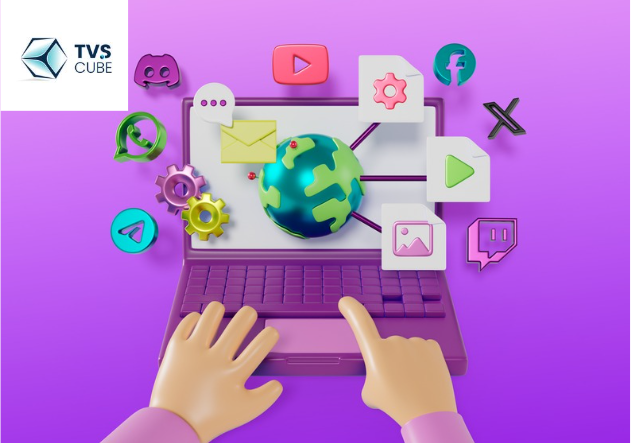
3. Making Complex Concepts Easy to Understand
Explaining complex ideas engagingly is vital for websites. TVS Cube’s 3D animations effectively simplify intricate concepts, showcasing products and services clearly. This visual storytelling enhances understanding, making content more accessible and relatable to users.
4. Creating a Memorable Brand Identity
In a crowded digital space, TVS Cube’s vibrant 3D animations enhance brand identity. Unique, dynamic visuals create consistency, capture audience attention, and reflect your brand’s personality beyond static images across campaigns.
5. Improving Website Performance and Load Times
3D animations won’t slow down your website if optimized correctly. TVS Cube ensures fast, high-quality animations that adapt to various devices, enhancing user experience without compromising load times or performance.
6. Driving Conversions Through Attention-Grabbing Features
Converting visitors into customers is the main aim of any website. TVS Cube 3D animations do just that; they are attention-grabbing and engaging so that the call to action can be included. Animate these key points around the offer, thus resultant purchase behaviors, with even opting for other direct results.
7. Future-Proofing Your Website
It’s a digital world; therefore, one must be updated with the trends. TVS Cube 3D animations are no longer a trend but a necessity for the future in web design. Your site now projects a modern appearance, reflecting innovation and increasing engagement with users while at the same time boosting retention.
8. Improved SEO with Engaging Content
3D animations enhance website SEO by increasing visitor engagement, reducing bounce rates, and boosting conversion chances. Search engines like Google value these metrics, so using TVS Cube’s animations benefits both user experience and SEO.
Why 3D Animation is a Game-Changer
Well, you see, to some extent, 3D animation has found its way even beyond making everything look wonderful. Actually, it has changed a couple of industries and continues to break new ground in creativity. Let’s get into this and then think about what makes 3D animation such a game-changer.
In Film and TV:
3D animation has revolutionized how we experience storytelling, from superhero movie visuals to lifelike creatures and landscapes in animated movies like Zootopia or Frozen. Filmmakers use 3D to craft entire worlds from scratch that would otherwise be unfilmable; characters can be created with intricate detailing; scenes may be either fantastical or realistic depending on our imaginations.
In Gaming:
3D animation plays an essential part in gaming’s industry. It allows developers to craft dynamic characters, environments and action sequences that respond in real-time to player input – from intricate facial animations in The Last of Us or fluid combat moves in Spider-Man: Miles Morales – giving video games life and interactivity through three dimensional imagery.
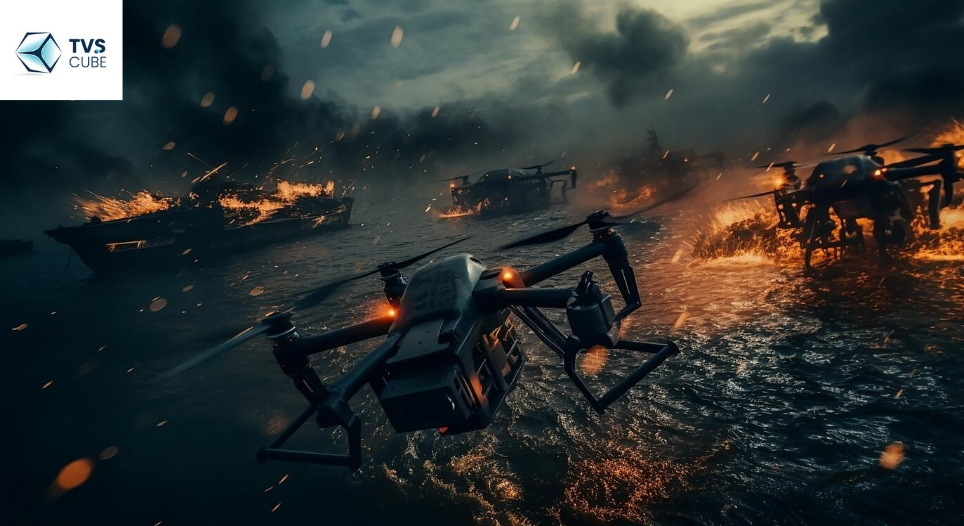
In Advertising and Marketing:
3D animation has quickly become one of the few tools of the advertising industry that can help create bold advertisements that sell not only spots in-between shows but also airtime. An example of such an application would be car commercials that use captivating 3D animation to exhibit features; moreover, the technology can be used in advertisements to vividly portray futuristic gadgets.
In Education and Medicine:
3D animation goes well beyond entertainment; its applications extend far beyond mere amusement. 3D animation can help make complex topics more approachable with interactive simulations and visualizations used for education purposes, while in healthcare 3D animation assists surgeons by explaining surgical procedures or visualizing anatomy – even aiding medical training through simulating surgeries or procedures.

How to Start Making 3D Animations Today
Stop! Before diving into steps, let’s make it clear; What is visual style in animation? Visual style in animation includes character design, color schemes, and movement, shaping the tone and emotional impact while reflecting the audience, genre, or purpose, influencing viewer perception. So, if you’re eager to get started on your 3D animation journey, here are a few practical steps to help you dive in: For professional guidance and high-quality results, you can also consider TVS Cube – 3D Animation Services USA, offering expert services to bring your creative ideas to life.
Step 1: Choose Your Software
Start off by finding software suitable to your needs. Blender can be an excellent place for beginners as it offers free features with multiple layers, while Maya or Cinema 4D would serve you better for professional work. Many programs also provide trial versions or educational discounts so take full advantage of any opportunities to test out each option before making your choice permanent.
Step 2: Learn the Basics
If you want to get into really hardcore stuff, prepare to get the basics on 3D animation in the first place. Learning early concepts like modeling, texturing, rigging, and animating very simple objects could be done in many ways-from finding free online tutorials, such as at YouTube, Udemy, or Coursera, which have many offerings of beginner courses.
Step 3: Practice, Practice, Practice
Practice is the cornerstone of becoming adept in 3D animation. Start out small and manageable projects before increasing complexity as your confidence and experience increase. Even if some early animation attempts don’t turn out perfectly, each attempt provides valuable lessons learned that may apply later.
Step 4: Join a Community
Join Blender Artists or CGSociety forums where you can showcase your work, ask questions, and learn from others – being part of this vibrant 3D animation community will keep you motivated, get feedback quickly, and help to expand your professional network with like-minded animators who share similar interests!
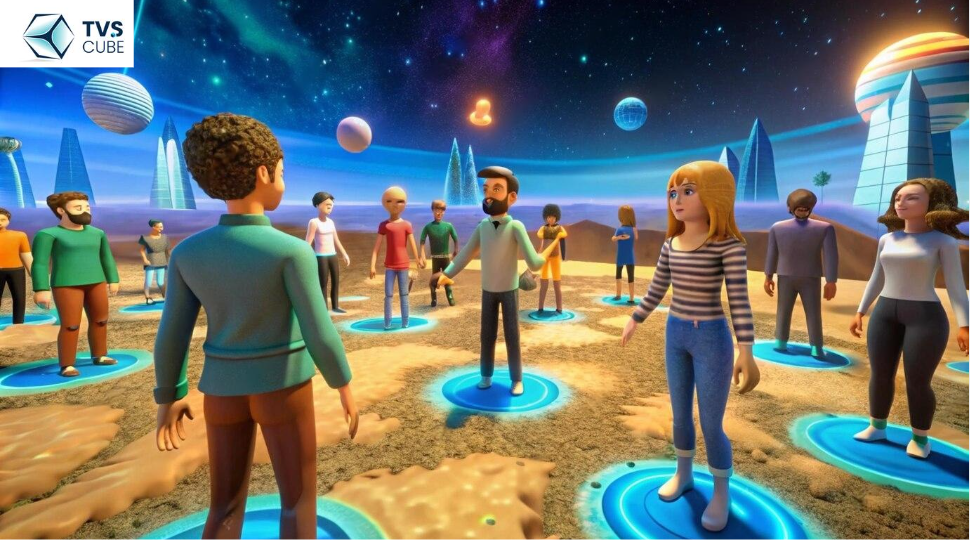
Step 5: Experiment and Push Boundaries
Once you’ve mastered the fundamentals, push yourself further by exploring more advanced techniques. Try animating something complex such as an action-filled character or creating an environment full of intricate details; pushing beyond your limits is what truly allows animators to develop as artists.
The Wrap up – The Magic of 3D Animation
3D animation is an exciting, rewarding, and endlessly creative field that provides endless opportunity. Learn the art of 3D animation to discover all ways to turn your imagination to life through films, games, ads, and digital art; infinite possibilities!
There’s always patience, skill, dedication, and the willingness to experiment in 3D animations, which make this both an art and science. As with any artistic pursuit, success comes through continuous learning and practice – so go forth with your plans! Now all the tools are at your fingertips so it’s time for action! So the next time you ask “How do I create 3D animations?,” be mindful that making them is not solely about learning software or following steps; rather it involves channeling creativity to build worlds, tell stories, and interact with audiences that feel as real as anything in reality. 3D animation isn’t simply technical skill – it is an artform which creates reality from imagination.
Start animating today – who knows? Perhaps the next great animation masterpiece might even come from you!






